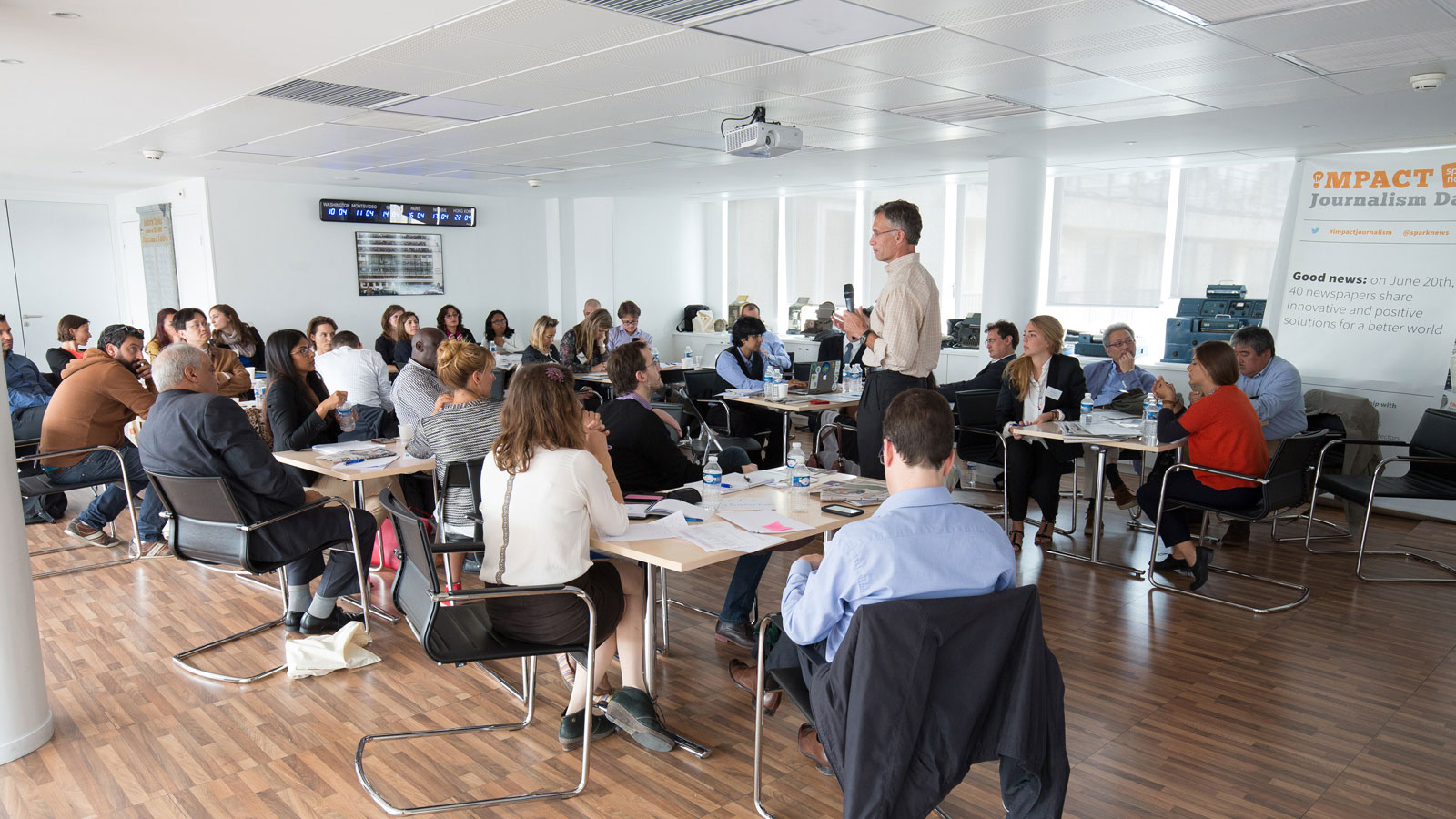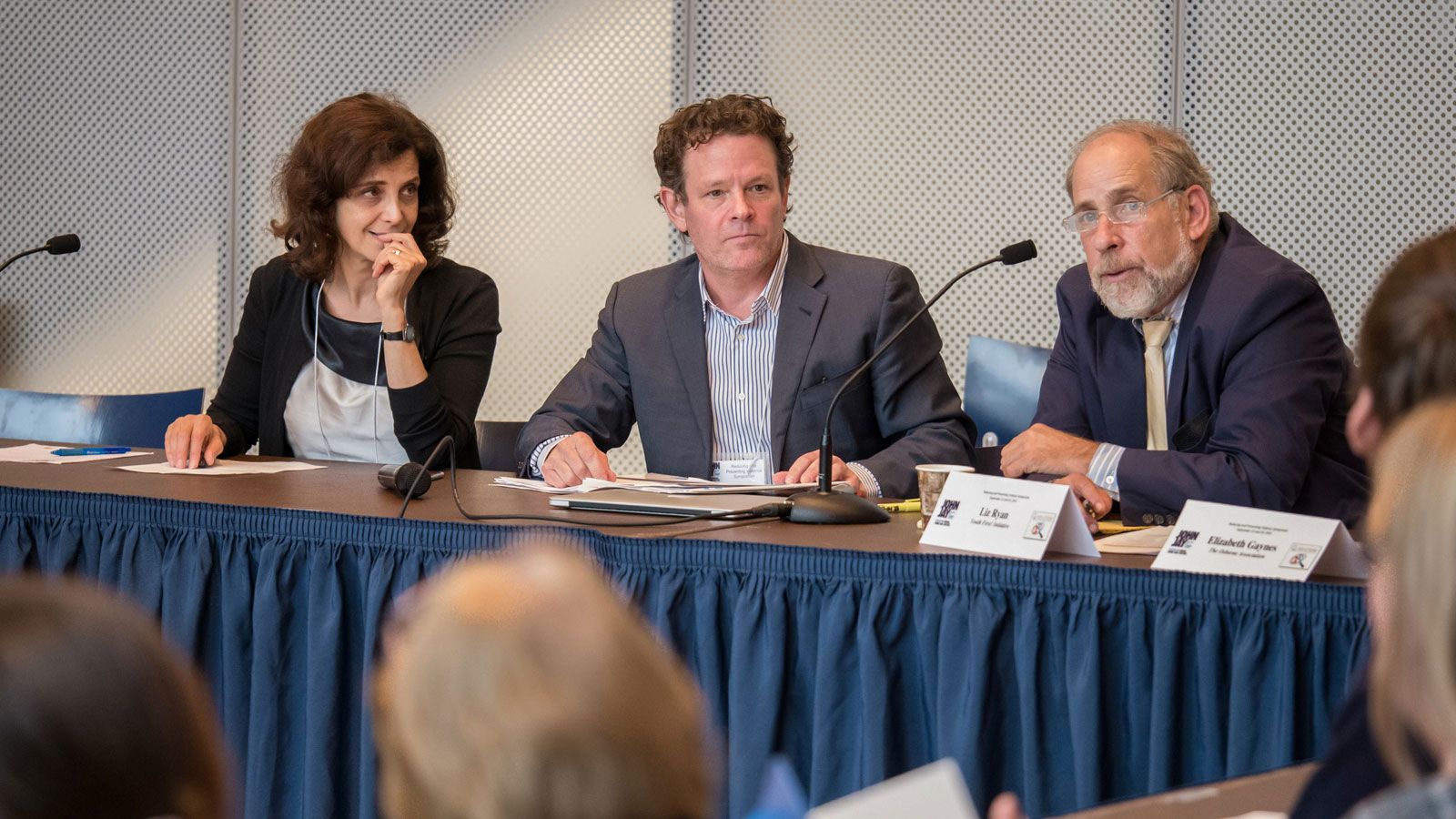Если вы читаете это пособие, это значит, что вас как минимум заинтриговала журналистика решений и ее потенциал для улучшения качества вашей репортерской работы. Прекрасно. Мы считаем, что журналистам на пользу знакомство с реакциями на проблемы.
Множество интересных историй никогда не попадает в СМИ. Почему? Дело в том, что журналисты как правило не рассматривают решения или реакции на проблемы как тему для материала или расследования. Часто журналисты и редакторы опасаются, что такой материал будет воспринято как эдвокаси, искусственный оптимизм или пиар. Миссией Сети журналистики решений (СЖР) является изменить это восприятие. Мы определяем журналистику решений как тщательное и аргументированное освещение реакций на социальные проблемы – освещение по наивысшим журналистским стандартам.

В нашу сеть входят более 170 редакций и более 1000 отдельных журналистов, которые вместе с нами доказывают, что журналистики решений не стоит опасаться. Наоборот, это важный и мало используемый инструмент для репортерской работы.
СЖР была создана Давидом Борнштейном и Тиной Розенберг, опытными репортерами, авторами колонки «Fixes» («Быстрые решения») в газете The New York Times, а также Кортни Е. Мартин, журналисткой и писательницей, начавшей свою карьеру во время бума онлайн-журналистики. Все трое побывали в уникальных местах, – например, в сельхозугодьях Индии, больницах Бразилии или 9-м районе Нового Орлеана, – и все пришли к одному и тому же выводу: между журналистами мало здоровой конкуренции в области написания материалов, которые рассказывали бы об реакциях на социальные вызовы.

Старый образ мышления гласит: если мы будем концентрироваться лишь на решениях, это повредит нашему профессионализму. Новый образ мышления иной: нашему профессионализму навредит отказ от освещения решений. Задача журналистов – правдиво отражать общественные процессы. Если мы не отражаем способы, которыми люди и организации пытаются решать проблемы (неважно, успешно или нет), мы не выполняем свой долг. Например, если мы обращаем внимание на системные проблемы в школах и игнорируем модели, созданные для улучшения образования, мы утаиваем от аудитории часть информации.
Многие из нас пришли в журналистику, пытаясь изменить мир к лучшему и повлиять на что-либо. Однако влиять на происходящее можно не только путем освещения того, что делается не так. Освещение проблем – это, конечно же, важно, но вы сможете добиться намного большего, если наряду с этим сообщите, как эти проблемы решаются. Часто журналисты пишут резко критические материалы о том, как государственные школы недостаточно развивают детей из бедных семей. Эти материалы были бы более эффективными, если бы в них также рассказывалось, как некоторые школы хорошо обучают своих учеников и как им это удается. Такие истории наполняют аудиторию энергией, изменяют общественный дискурс и влияют на смену политики.
Люди не изменяются лишь потому, что кто-то описал их проблемы. Они должны знать, что изменения возможны, и видеть примеры успешных решений. Общества устроены так же.
Наша Учебная лаборатория журналистики решений создана для тех, кто хочет практиковать журналистику решений. Мы надеемся, что на этих страницах что-то ценное для себя найдет каждый: и опытный журналист, желающий освежить свои подходы, и успешный видеограф, желающий вернуться к тому, ради чего пошел в журналистику, и студент журфака в поисках специализации, и другие медиапрофессионалы.
Лаборатория поможет вам ознакомиться с журналистикой решения от первого шага – поиска стоящей темы – до последнего: как заинтересовать и вовлечь читателей в уже опубликованный материал. Однако не стоит воспринимать этот учебный материал как традиционный учебник и читать его последовательно. Выбирайте те главы, которые для вас наиболее полезны.
Чтобы помочь вам в моменты творческого кризиса, мы включили в структуру пособия несколько материалов, написанных в жанре журналистики решений. С помощью Инструментария вы сможете ознакомиться с видео и интерактивными упражнениями, которые позволят вам претворить в жизнь подход, основанный на решениях. Вы также найдете ссылки на примеры из практики на нашем Ресурса историй с решениями и ознакомитесь со ссылками на другие ресурсы на нашем и других сайтах. Кроме того мы создали специальные гиды для репортеров, специализирующихся на здравоохранении, образовании и борьбе с насилием.
Мы рассматриваем данное пособие как рабочий документ и надеемся на вашу обратную связь – по электронной почте, с помощью Твиттера или Скайпа. Мы открыты к любым советам, которые помогут нам улучшить наш ресурс и сделать его более полезным для растущей сети журналистики решений.
Надеемся на вашу помощь!
